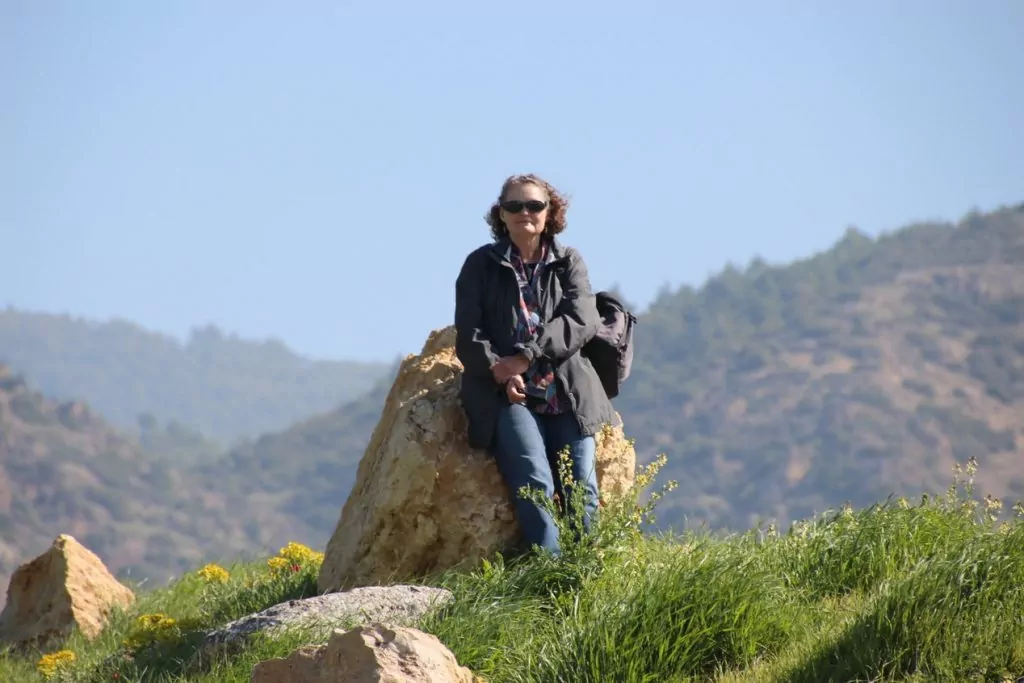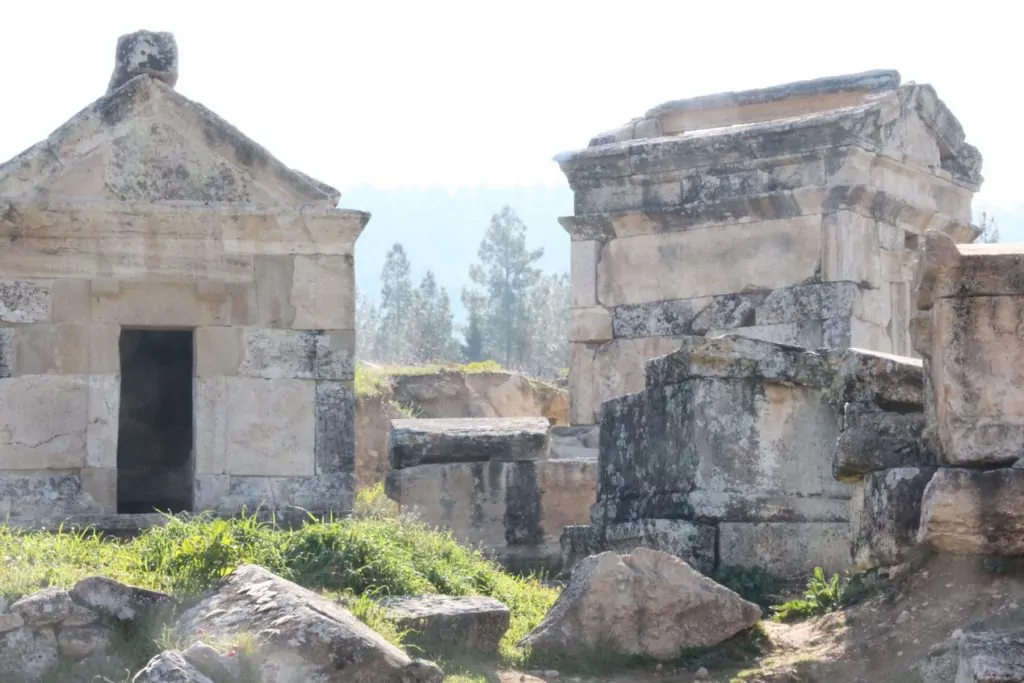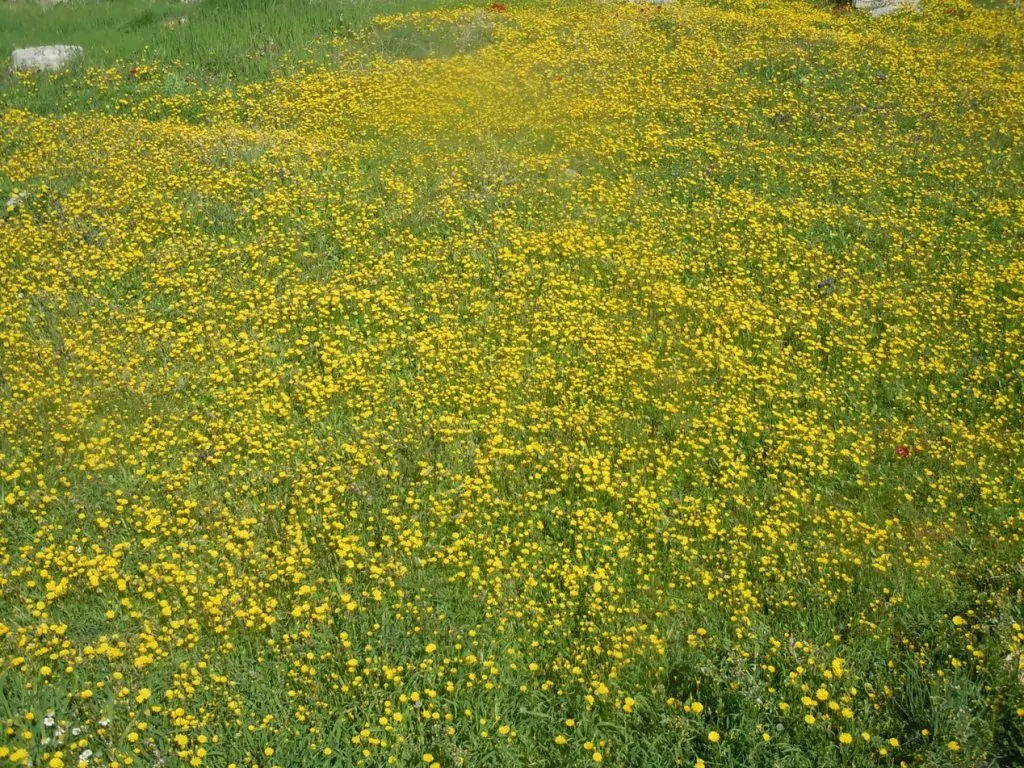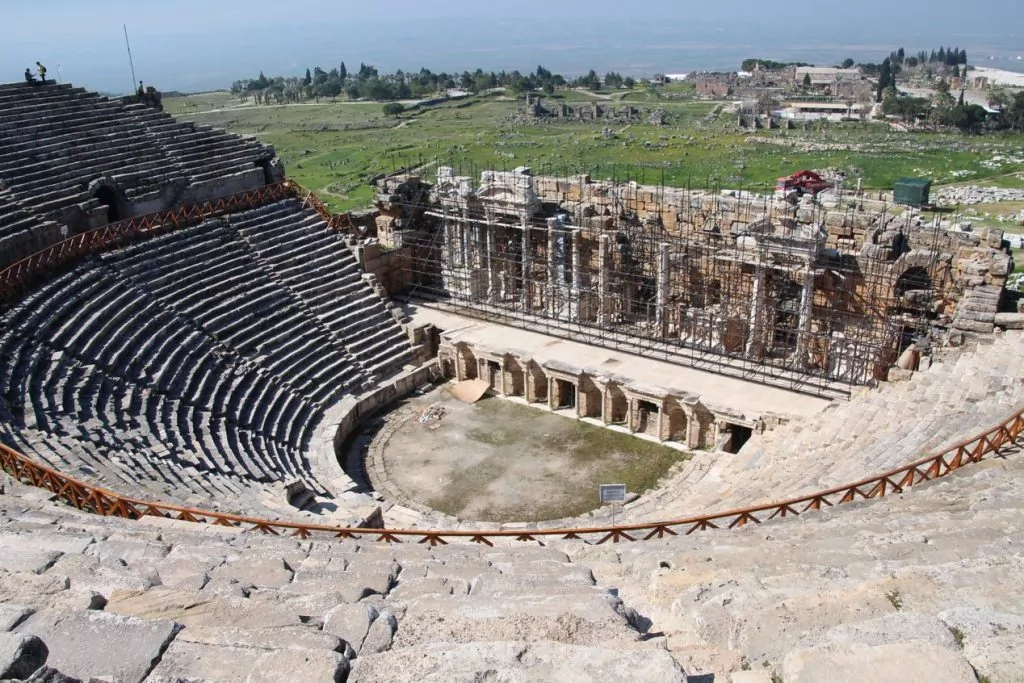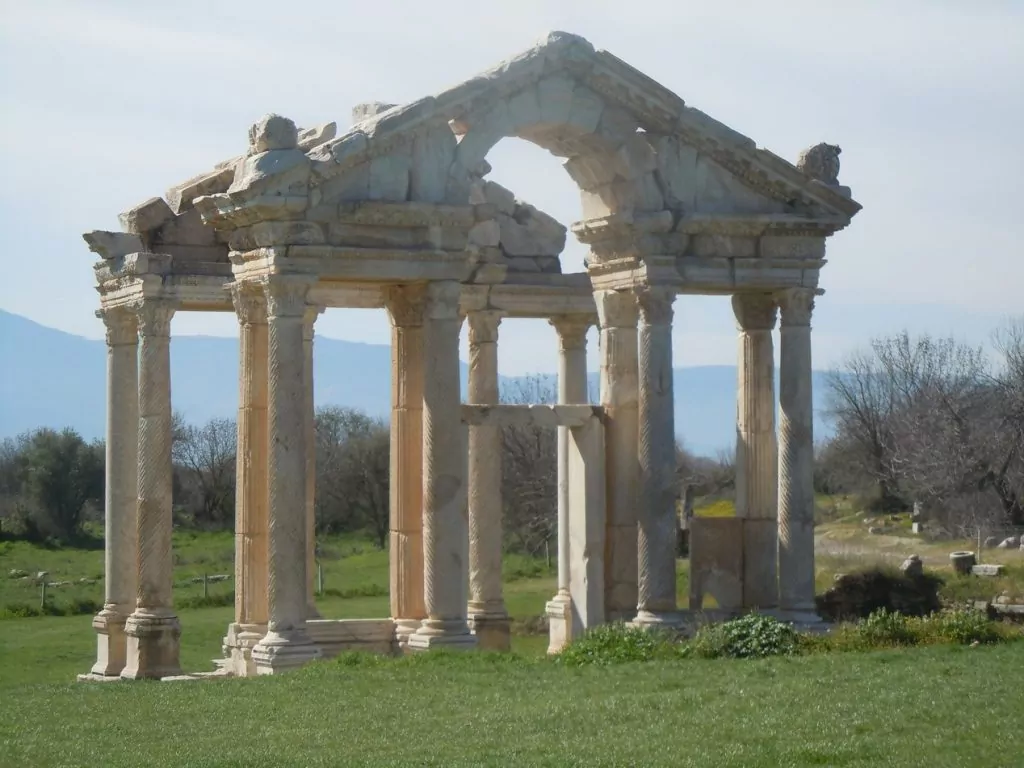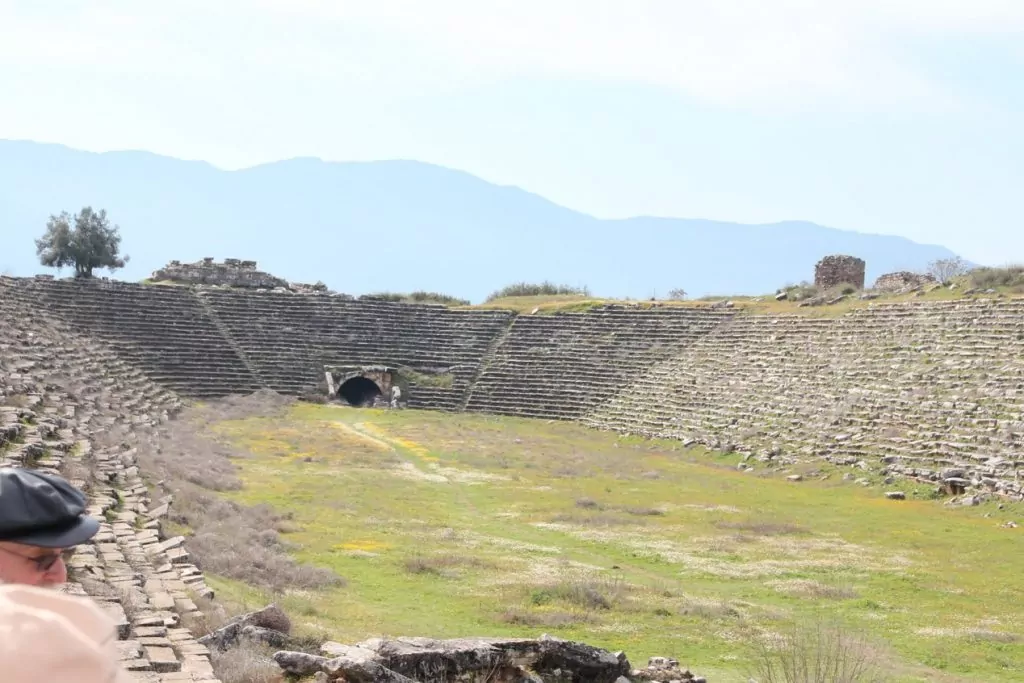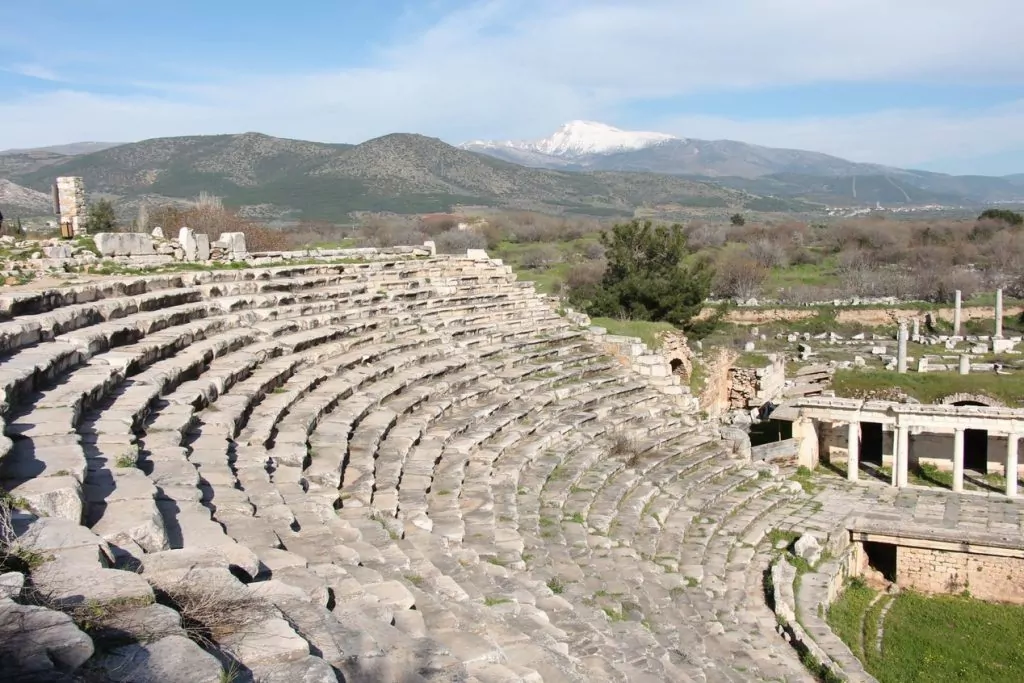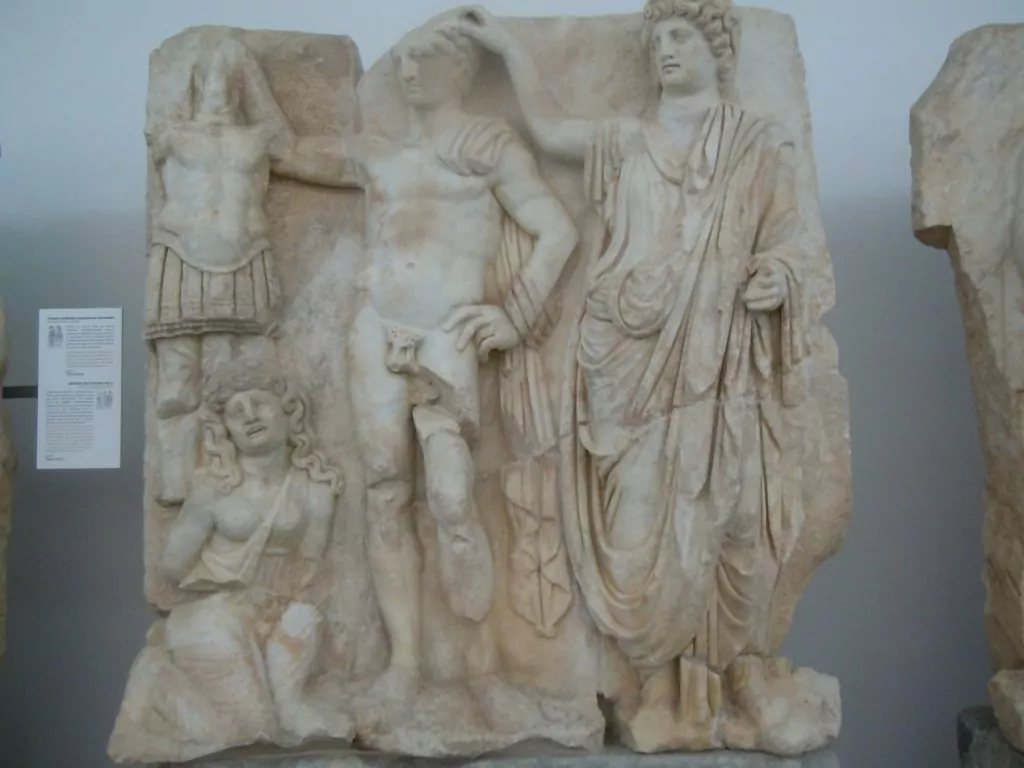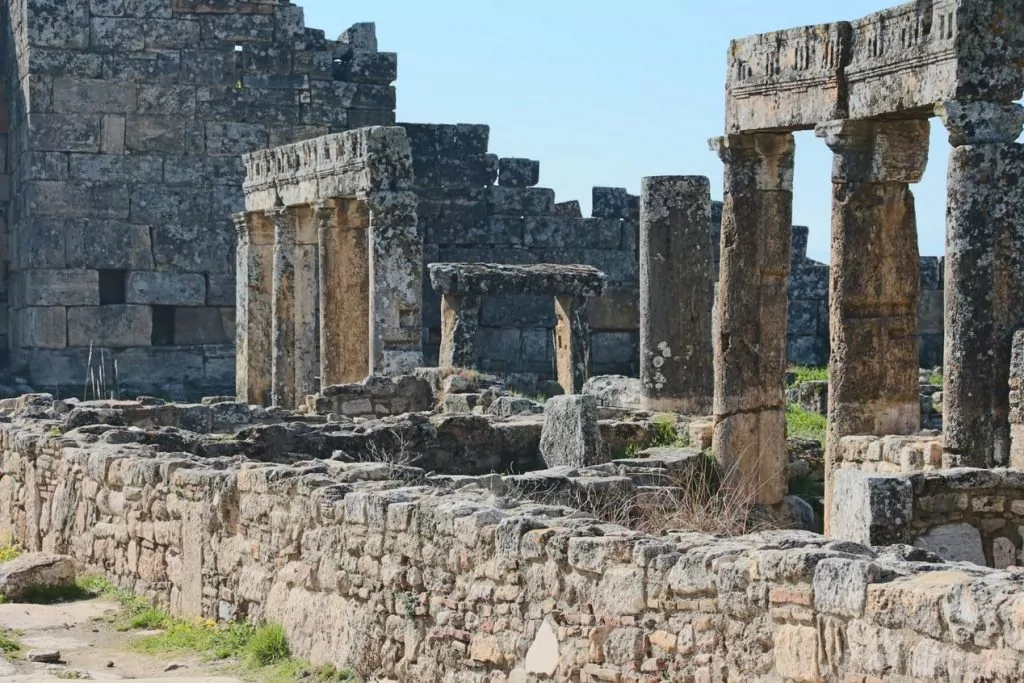March 24, 2013
This will be a short write-up tonight. Not because we did nothing interesting, but because we saw so much. It will take longer than I can spend this evening to describe our visits to two open air sites.
Once again we had very pleasant weather all day long. The sky was mostly clear and the temperature was comfortable. That was important because we were outside nearly all day long.
We left the hotel early (not a bad thing) and drove to nearby Hierapolis. This city was most active from about 200 B.C. until sometime in the 300s A.D. It is located around/above some hot springs and the water is rich in a form of minerals that makes it easy to fix dyes. The Greeks and Romans created an industrial city that grew rich and famous for textiles.
Some of the people who lived there had tombs and monuments built for themselves so they would be long remembered. They weren’t entirely successful of course, since after 2000 or more years they are forgotten as individuals. But the tombs they left behind line one of the entrances to the city for well over a half mile. The theory seems to have been that if your tomb was noticed on the way into/out of town, someone might remember you and pray for you. After John Lee gave us some background and answered questions, we wandered around the necropolis and the rest of the city for a couple of hours. We climbed on the ruins and took pictures. We walked through the green fields and took pictures of the wild flowers.
We hiked up the hill and took pictures in the restored stadium. You get the idea: we took a lot of pictures. I will post some of the pictures on the pictures page–but not tonight.
Hierapolis is very large in extent and there are many partially restored areas including a couple of early Christian churches. As in Smyrna, even though Hierapolis was Roman in its later days, the people were Greek and the inscriptions and the style of the statues were Greek. I’ll mention a couple more things for local color. One can still bathe in the hot springs and some people were doing that. They also have a “feature” called “doctor fish.” To experience this, you sit on a bench and put your feet in the water and fish nibble at them. It is supposed to be therapeutic. Needless to say, Patricia and I did not try either of those things.
After a short hike back to the bus, we headed for the site of Aphrodisias. On the way we stopped for lunch at the Anatolya Restaurant. At this small roadside restaurant everyone stood by a cart had the waiter yelled out “menu, menu, how many menu?” which meant how many people want the fixed menu. Then he pointed at each of the entrees on the cart and you were supposed to indicated if that is what you wanted. Then we sat down outside and 5 minutes later they began delivering food. It all worked remarkably well. At the end the waiter came back with a receipt printer and you pointed at what you ate and he calculated a price. He was followed by the money guy who looked at the total and held out his hand. They were clearly used to dealing with tour groups. Did I mention the entertainment? Someone playing an old instrument called a “sadz” (I think. It is sort of like an oud or lute or guitar) wandered around the tables and all the while his parrot (yes, parrot) walked up and down the neck of the instrument, carefully avoiding his fingers as they moved.
Aphrodisias is another wonderful (word chosen carefully) site. This site was known for its marble and marble is to be seen everywhere.
We spent time in the partially restored temple of Aphrodite (hence the city name) and walked with John Lee as he offered some history and answered questions.
He took us to the stadium. As people walked through the entranceway, the reaction was often that they would come to a dead stop and say something like “Oh, my god!” The stadium is 270 meters long and has 30 rows of seats all the way around. It is large enough for chariot races. Then we had some time—but not enough—to walk around the rest of the site. There is still work going on there and probably will be for years since only a small part of the city has been excavated. We saw Hadrian’s Bath. I should mention that bathhouses are large, complex structures often paid for by the Roman emperor as a way to gain favor with the people. Think of it: In this case Hadrian was trying to impress people hundreds of miles away by sponsoring a public works project. He might even be a Senator or Congressperson today.
We found the Theater as well. It was much smaller than the stadium. It is built into the side of a hill which isn’t really a hill but a mound left by some occupants around 3,000 B.C.
When we got there, a father and his daughter, who was probably about 11 or 12, were up on the ancient stage singing and dancing. There were only a few other tourists around but the entertainers got a round of applause as they left.
There is a really nice museum at Aphrodisias and we spent a little time inside looking primarily at the statues and figures from the site.
So far, every place we have visited has had only a few other visitors. It is as if we had these treasures to ourselves. SAR has done an excellent job with the arrangements and John Lee and Yildirim have told us a great deal and patiently answered our questions.
Ptures for Hierapolis, Aphrodisias, and Karacasu havebeen posted on the pictures page.
Below is a map of most of today’s route. I you are interested in seeing more details on the map, follow the link to the larger version. For example, if you go to the end of the route and zoom in and turn on the satellite imagery, you can see details like the ruins of the stadium, and our tracks as we walked around in it.
